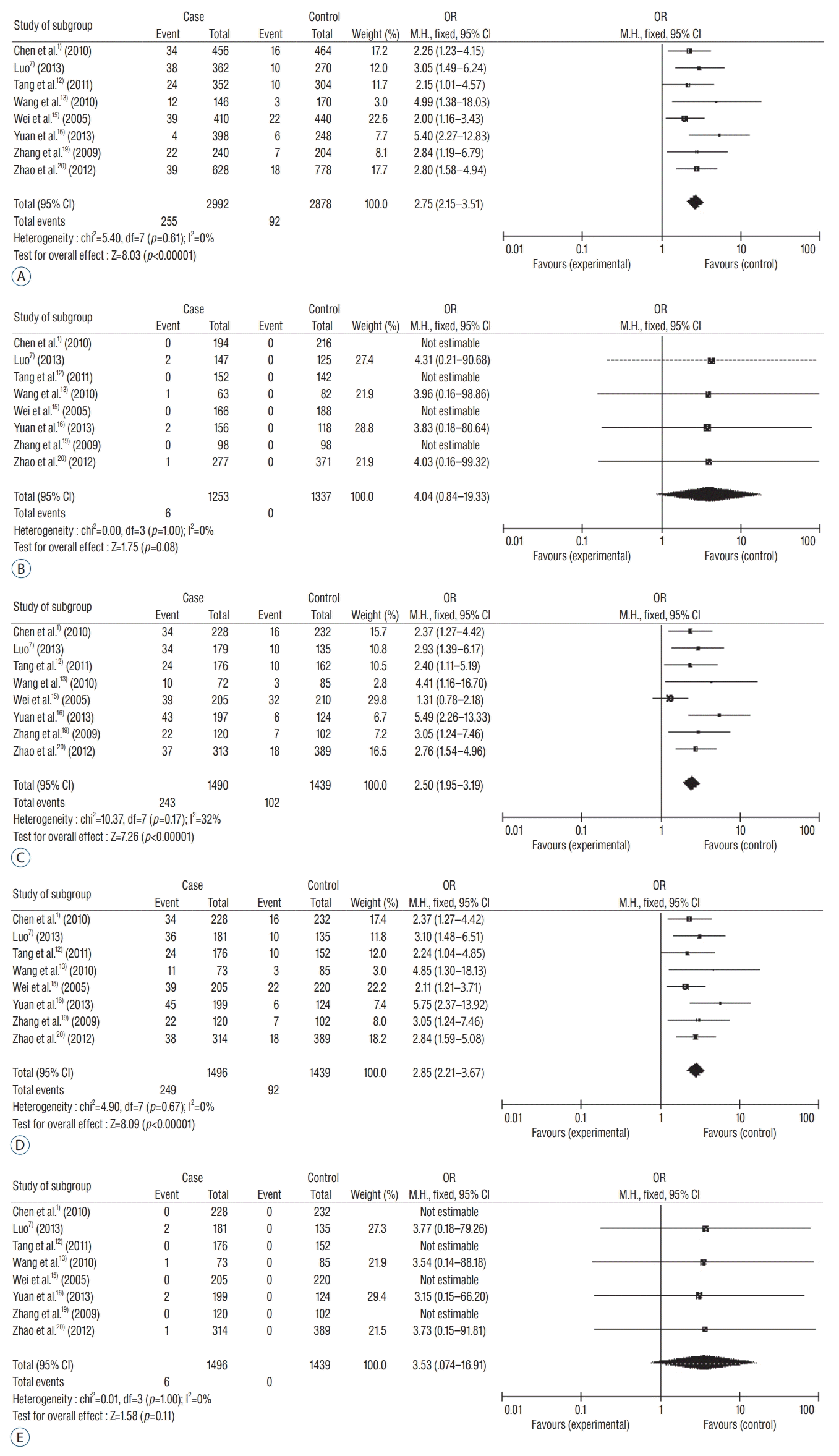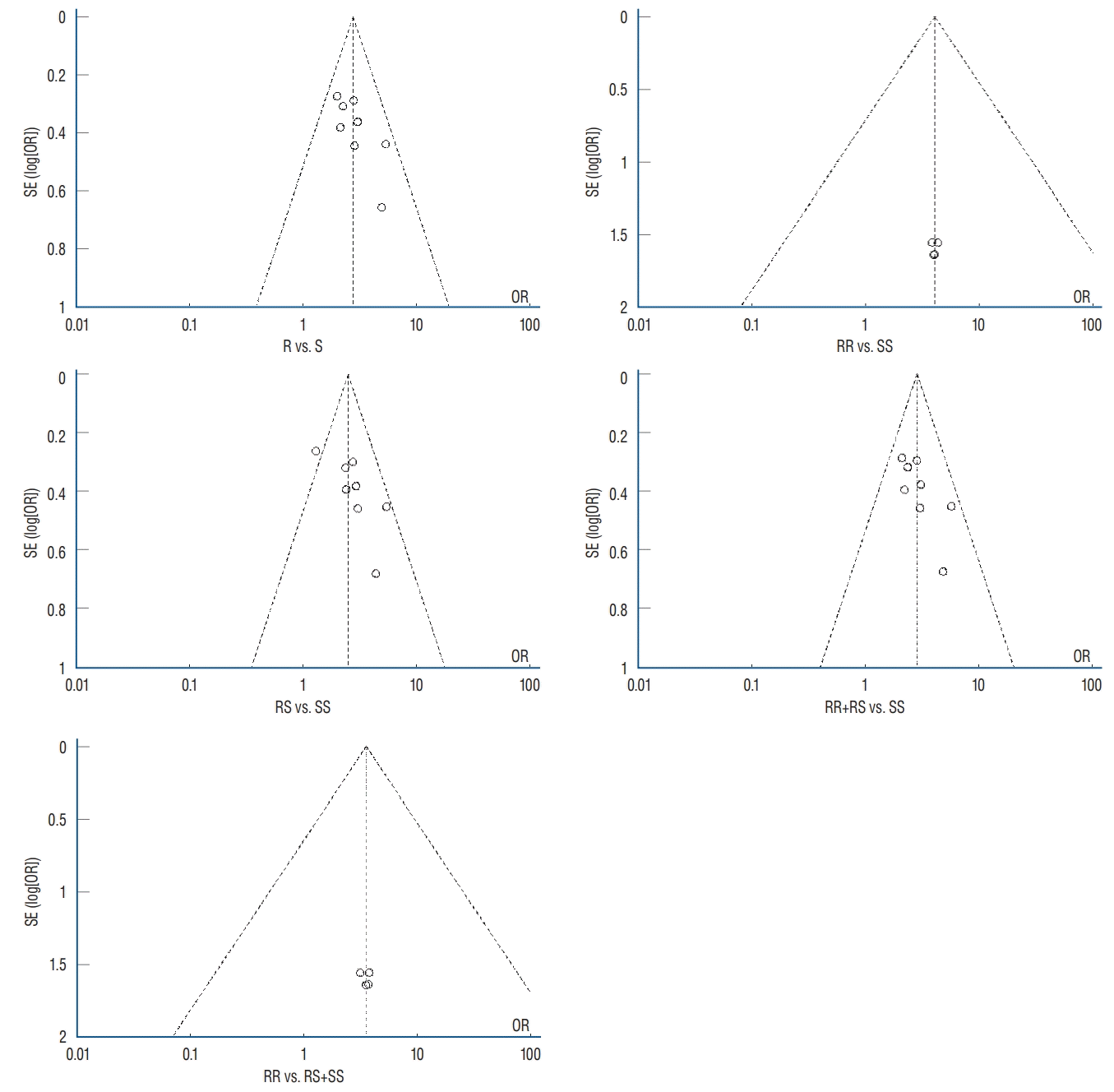1. Chen JN, Wei GY, Fu XL, Li ZX, Liang LP, Deng YY, et al. Relationship of E-selectin A561C gene polymorphisms in patients with cerebral infarction and its effect on plasma lipid level. CHN J of Mod Medicine. 20:2468–2470. 2010.
2. Das S, Roy S, Kaul S, Jyothy A, Munshi A. E-selectin gene (S128R) polymorphism in hemorrhagic stroke: comparison with ischemic stroke. Neurosci Lett. 581:125–128. 2014.

3. Haidari M, Hajilooi M, Rafiei AR, Rezaii AA, Hoseinipanah SM. Eselectin genetic variation as a susceptibility factor for ischemic stroke. Cerebrovasc Dis. 28:26–32. 2009.

4. Katan M, Luft A. Global burden of stroke. Semin Neurol. 38:208–211. 2018.

5. Kumar A, Misra S, Sagar R, Kumar P, Yadav AK, Talwar P, et al. Relationship between factor V Leiden gene variant and risk of ischemic stroke: a case-control study. Ann Indian Acad Neurol. 20:284–288. 2017.
6. Losey P, Ladds E, Laprais M, Geuvel B, Burns L, Bordet R, et al. The role of PPAR activation during the systemic response to brain injury. J Neuroinflammation. 12:1–10. 2015.

7. Luo D. Association study between a polymorphism of E-selectin S128R gene and stroke. CHN J of Med Inform. 26:326–327. 2013.
8. Mlekusch W, Exner M, Schillinger M, Sabeti S, Mannhalter C, Minar E, et al. E-Selectin and restenosis after femoropopliteal angioplasty: prognostic impact of the Ser128Arg genotype and plasma levels. Thromb Haemost. 91:171–179. 2004.

9. Roy S, Das S, Danaboina R, Sharma V, Kaul S, Jyothy A, et al. Association of E-selectin gene polymorphism (S128R) with ischemic stroke and stroke subtypes. Inflammation. 37:599–603. 2014.

10. Srivastava K, Chandra S, Narang R, Bhatia J, Saluja D. E-selectin gene inessential hypertension: a case-control study. Eur J Clin Invest. 48:e12868. 2018.
11. Stang A. Critical evaluation of the Newcastle-Ottawa scale for the assessment of the quality of nonrandomized studies in meta-analyses. Eur J Epidemiol. 25:603–605. 2010.

12. Tang TT, Ren TL, Zhang YL. Analysis of A561C gene polymorphism in exon 4 of E- selectin in 176 stroke patients. SD Medical J. 51:77–78. 2011.
13. Wang F, Liu RZ, Liu ZW. Association of Plasma E-selectin, S128R Gene Polymorphisms and Cerebral Infarction in Shanxi Han Population. CHN J of Integ Med on Cardio/Cerebrovascular Dis. 8:549–551. 2010.
14. Wang X, Feuerstein GZ. Induced expression of adhesion molecules following focal brain ischemia. J Neurotrauma. 12:825–883. 1995.

15. Wei YS, Qunqing XU, Meng L, Liang F. Polymorphisms of E-selectin gene and genetic susceptibility of ischemic stroke in Zhuang nationality of Guangxi province. J Third Mil Med Univ. 27:2160–2163. 2005.
16. Yuan D, Kan CY, Gao P. Association study between a polymorphism of E-selectin gene and cerebral infarction. J of Apoplexy and Nerv Dis. 30:208–210. 2013.
17. Zhang R, Chopp M, Zhang Z, Jiang N, Powers C. The expression of P- and E-selectins in three models of middle cerebral artery occlusion. Brain Res. 785:207–214. 1998.

18. Zhang Y, Wang X, Xu X, Chen R, Kan H. Stock volatility and stroke mortality in a Chinese population. J Cardiovasc Med (Hagerstown). 14:617–621. 2013.

19. Zhang YL, Tang T, Fang B. Polymorphisms of E-selectin S128R gene and genetic susceptibility of cerebral thrombosis. CHN J of Med Inform. 19:1989–1991. 2009.
20. Zhao DX, Feng J, Cong SY, Zhang W. Association of E-selectin gene polymorphisms with ischemic stroke in a Chinese Han population. J Neurosci Res. 90:1782–1787. 2012.









 PDF
PDF Citation
Citation Print
Print



 XML Download
XML Download